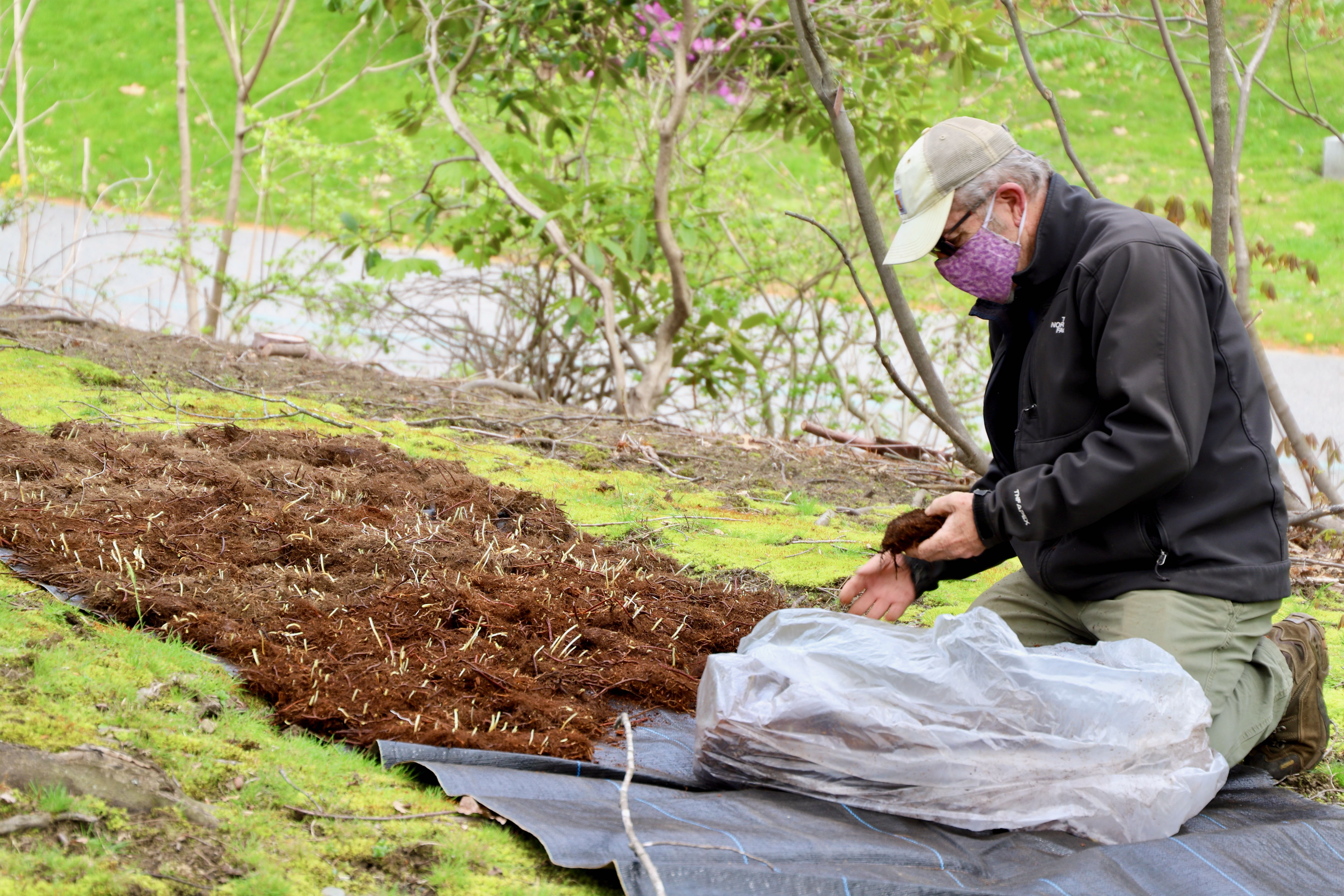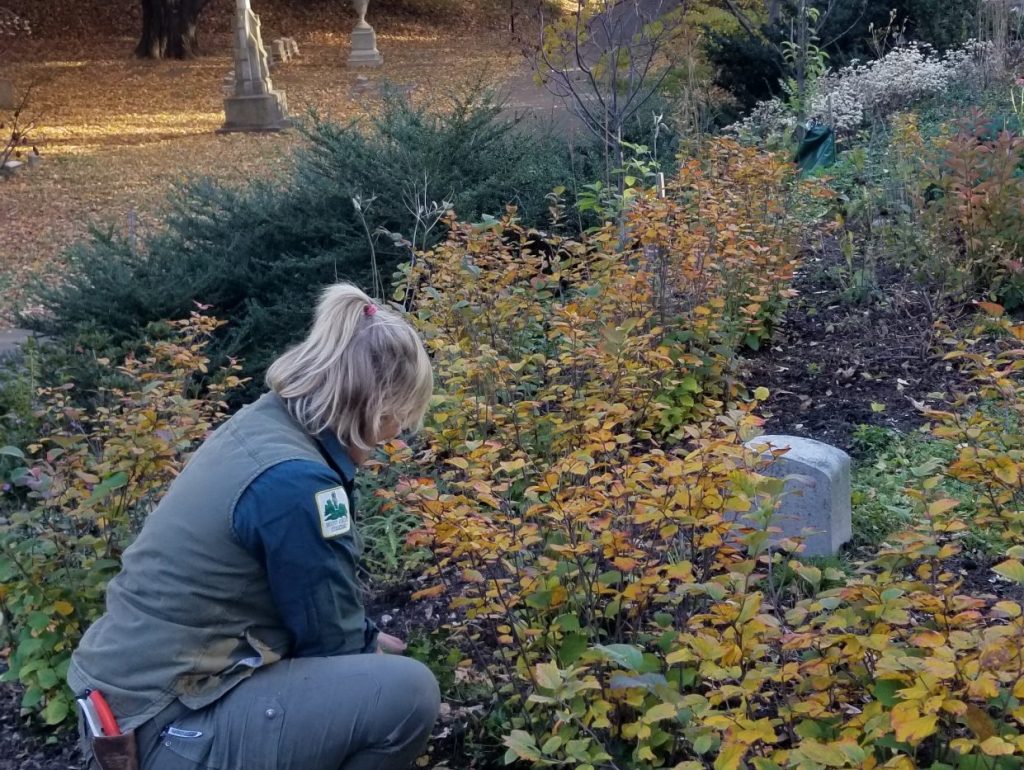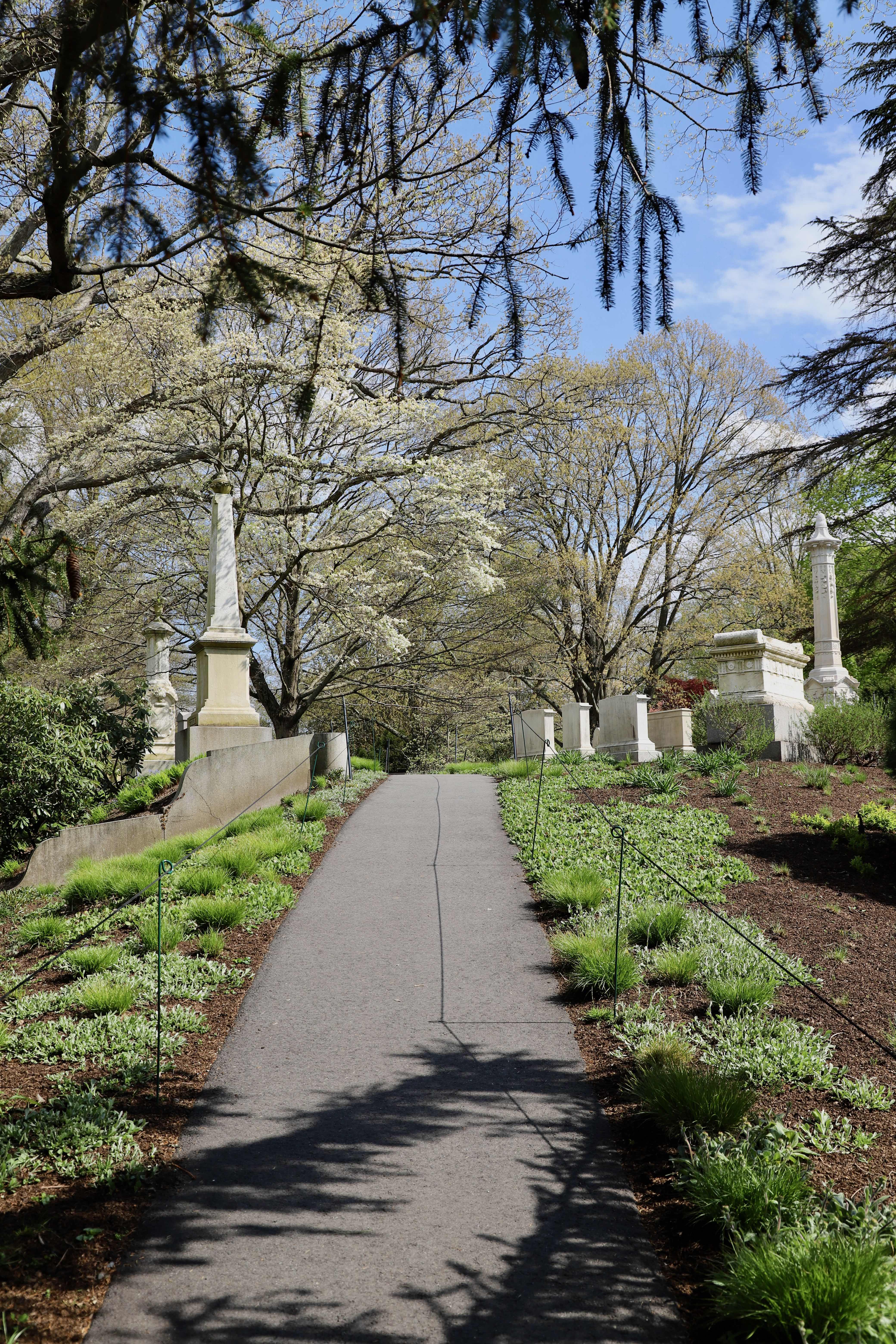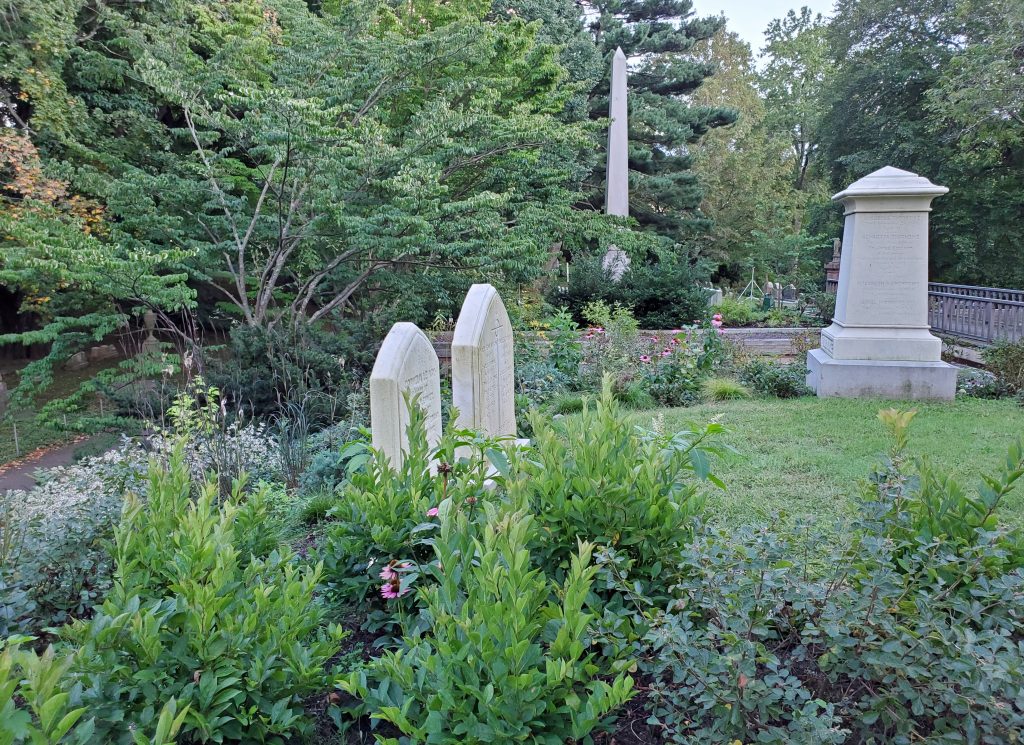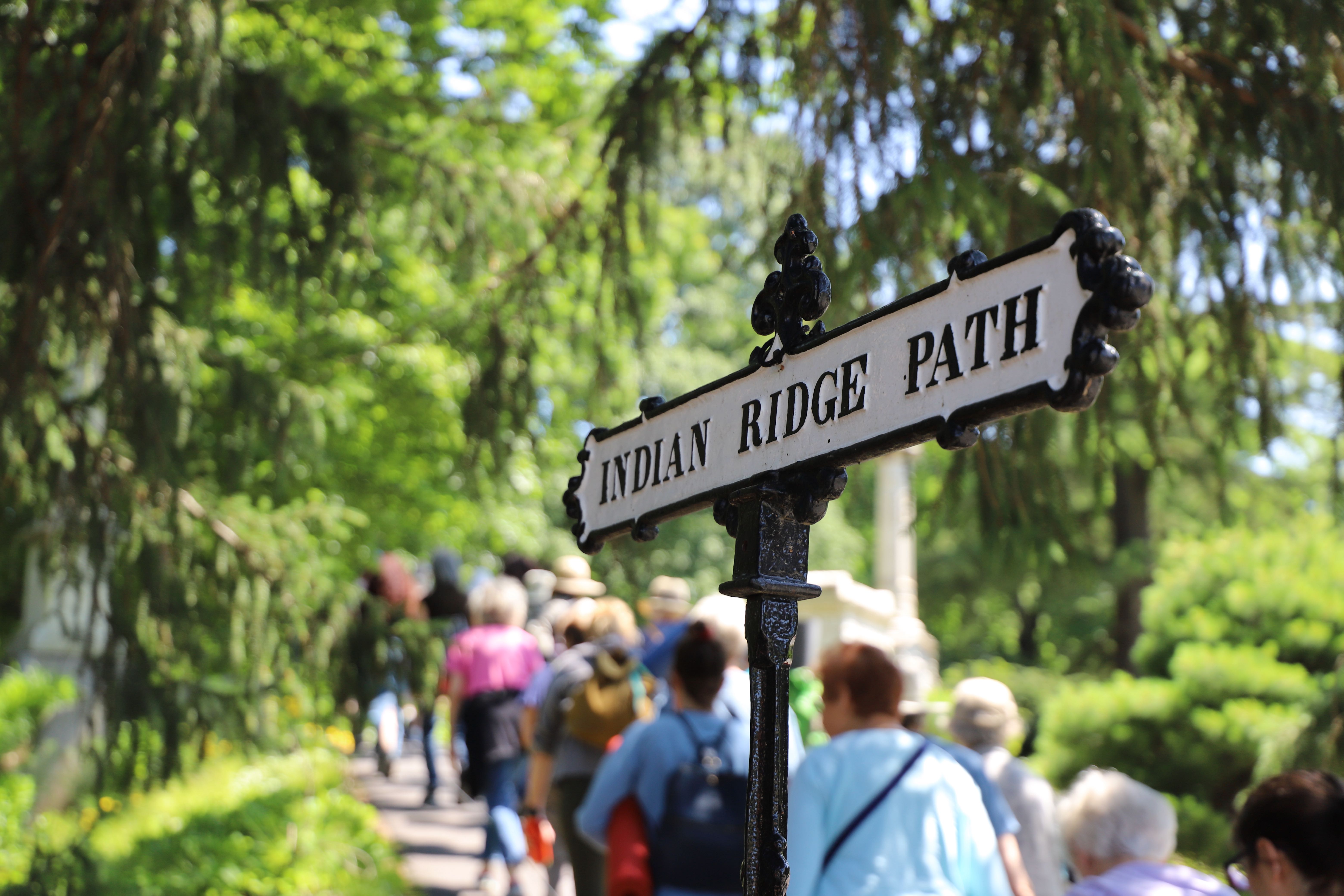
Indian Ridge Path Habitat Restoration
Phase I & II
Located near the Main Entrance Gates, Indian Ridge Path is one of our most popular areas to walk, offering a mix of the history, natural beauty, and wildlife that make Mount Auburn so special. It is also a prime birdwatching spot during the spring migration each year, as a destination for neotropical warblers who stop at Mount Auburn to feed before heading north to Canada.
Mount Auburn identified that the area lacked landscape cohesion and the horticultural selection was overwhelmed with invasive plants which offered few resources for insects or birds. Given the already high level of migratory bird activity, we made it a priority to create a landscape design that adds both visual appeal and plant diversity – especially native plants to better serve native wildlife species – to the area.
Our plan was inspired by one of the best features of the current landscape: a series of white-flowered trees each spring. The new design expanded on this with a dramatic progression of 21 new flowering trees including Silverbell and Redbud.
New masses of shrubs provide much-needed “thickets” for birds while protecting slopes against erosion. The new flowering trees create a corridor of habitat-friendly plants with lush foliage, flowers, and fruit. Other new trees (White Oak and Shadblow) provide food and shelter for dozens of species of birds and mammals. And areas currently dominated by turf grass or bare ground have been transformed with more diverse native plants.
For phase I of the project in late 2019 and early 2020, we removed a number of invasive species, including several Norway Maples, which have been crowding out more habitat-friendly native plants for many years. Phase II commenced ahead of schedule with the replanting along the slopes completed in the spring and summer of 2020. Phase II of the project focused on the area atop the Ridge: replanting alongside the path and parts of the western side overlooking Auburn Lake.
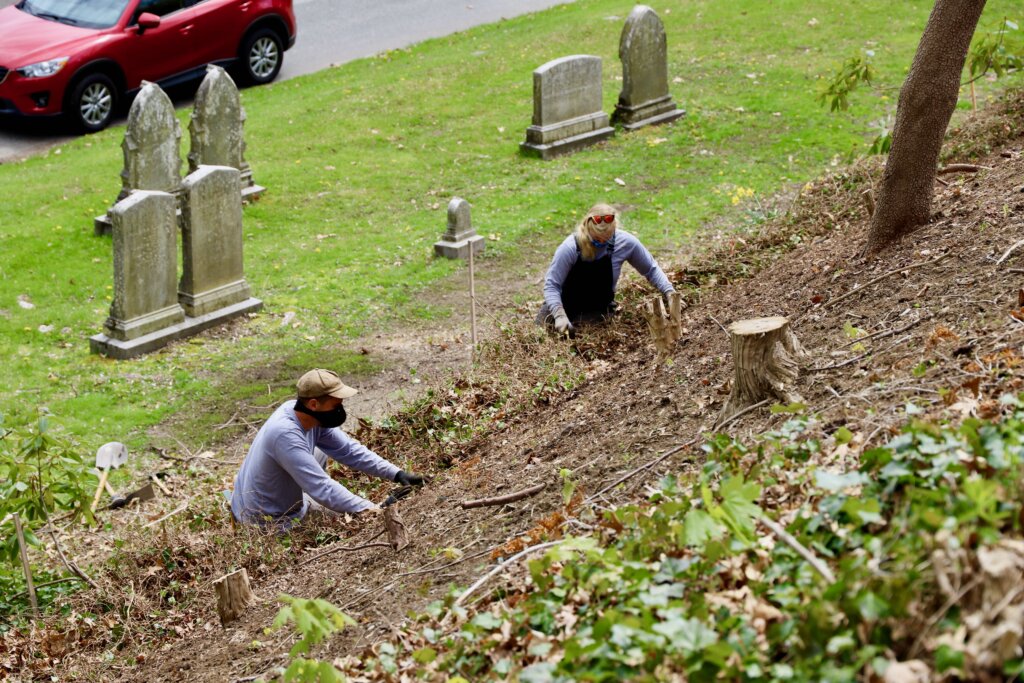
Phase III: Design–Sedge and Wildflower Meadow
While we had made substantial progress, at this point in the project we still had many areas of plain turf grass in between the replanted sections. We also needed to replace the path along the Ridge which was narrow, damaged in many spots, and made of non-sustainable asphalt.
For Phase 3, we turned to Larry Weaner Landscape Associates to create the landscape design. Principal and founder, Larry Weaner has been a leading voice in the movement to shift from reliance on turf grass to diverse and ecologically-friendly groundcover. For many years, he has been working with us on the most effective ways to implement turf grass replacement throughout the Cemetery – one section of the landscape at a time, and always with the goal of complementing the monuments, trees, and other features that are already in place.
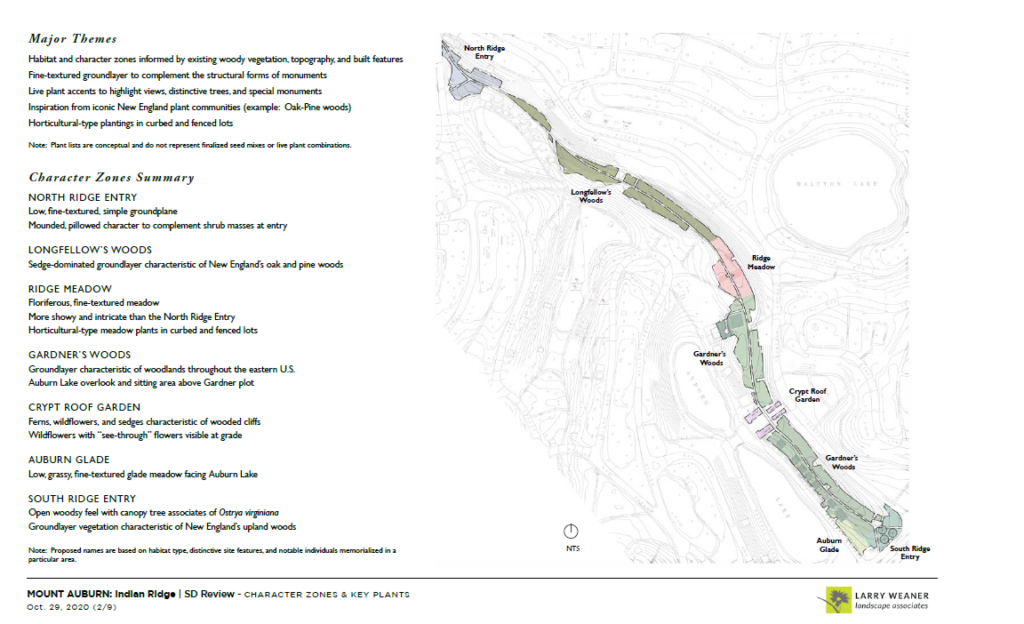
Larry has worked with Jenna Webster, Senior Associate at Larry Weaner Landscape Associates, to create a native planting scheme that will stretch across the entire 1,800-foot Ridge. It features a sedge and wildflower meadow along with an ambitious series of landscape character zones. These distinct zones – North Ridge Entry, Longfellow Woods, Ridge Meadow, Gardner’s Woods, Auburn Glade, and South Ridge Entry – draw inspiration from the legacy of the Ridge’s historic landscape, including some of its most notable monuments.
We also replaced the majority of the narrow, damaged asphalt path with a permeable paving alternative. Asphalt produces harmful gases during production and installation, and increases the “heat island effect” in urban areas. As part of our commitment to sustainability, we are using a more environmentally-friendly stone aggregate instead. The larger and smoother path can also accommodate more visitors.
Indian Ridge Path Habitat Restoration Image Gallery
Acknowledgements
Thank you to the Ruggiero Memorial Trust, Larry Weaner Landscape Associates, Capizzi & Co Landscaping, Parterre Landscaping Contractors and our individual supporters through the Friends of Mount Auburn.


